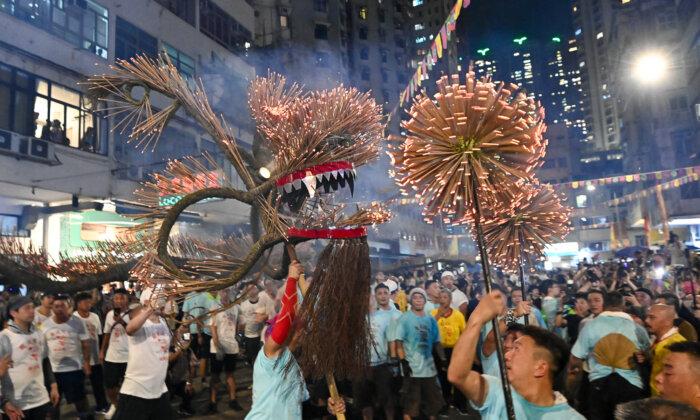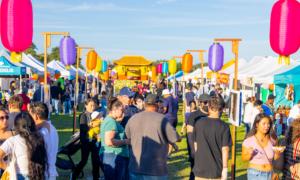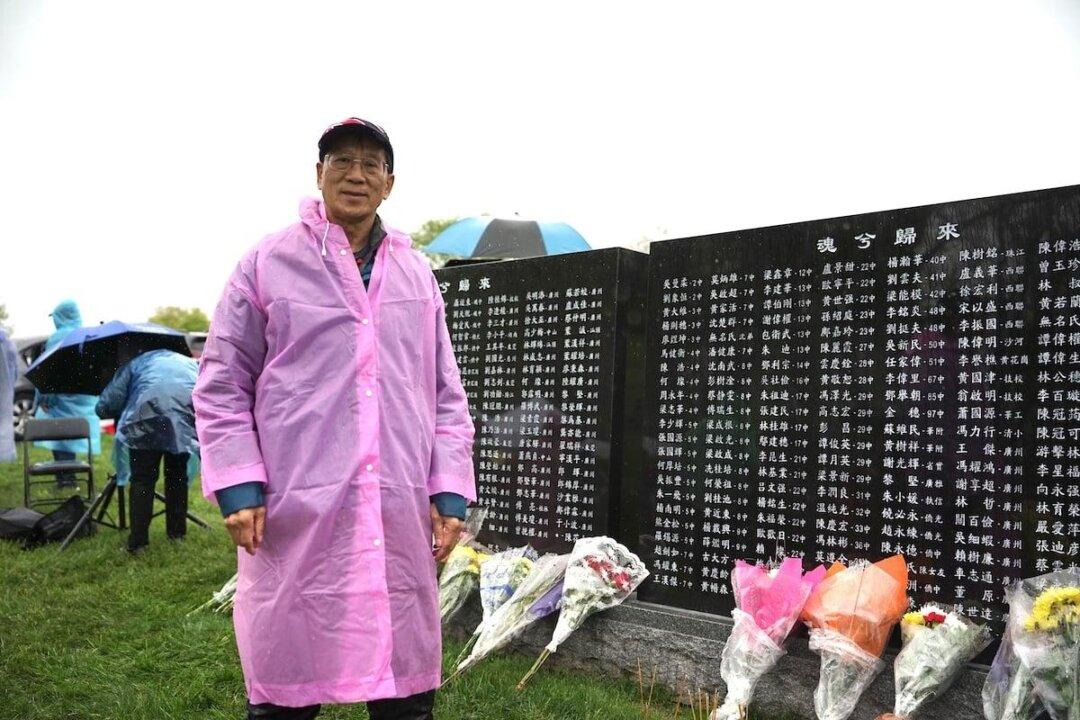A Living Legacy: Chan Tak Fai
Chan was born in Tai Hang Village in 1946 and was the eldest among five siblings. At that time, Tai Hang was a tranquil hamlet centered around a large pond, with streams that fed the surrounding paddy fields. The community, known for its unity, would come together during festivals, setting up canvases, lighting, and communal tables loaded with homemade dishes for shared meals.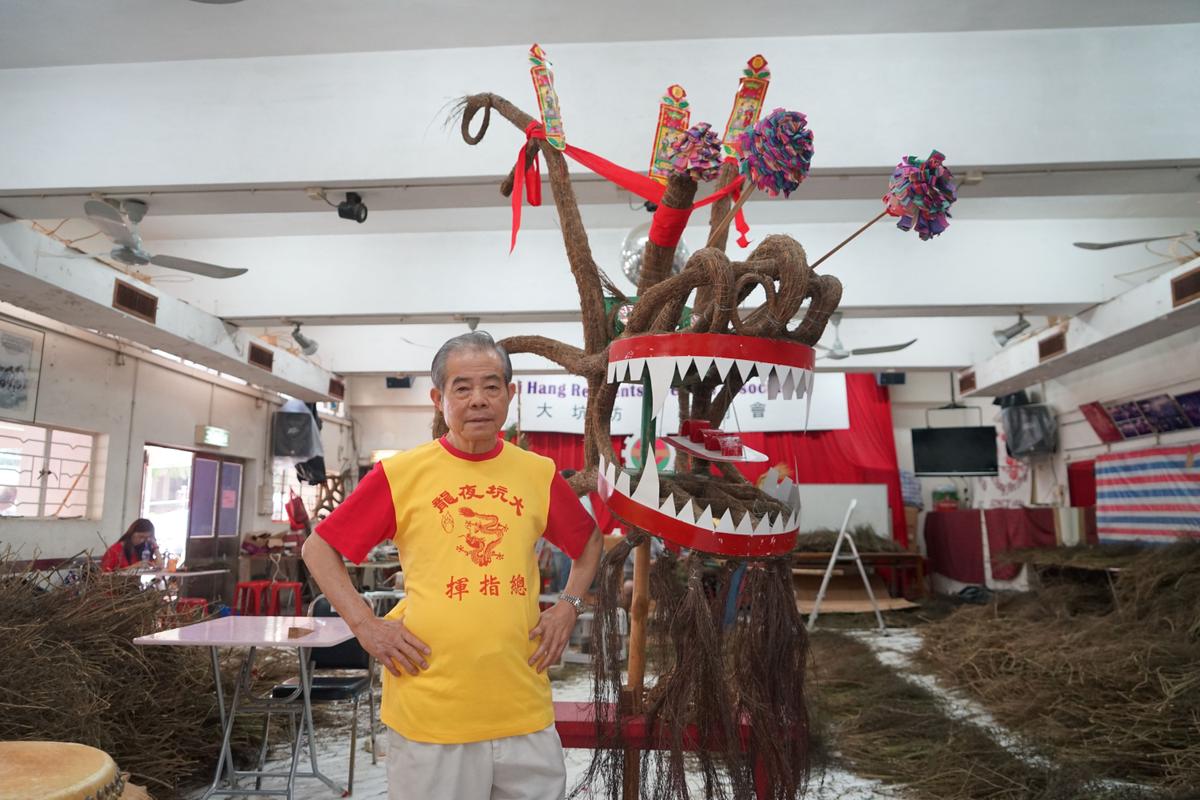
Primarily a Hakka settlement, Tai Hang has roots that date back to the mid-19th century. The villagers traditionally made their living through farming, fishing, and odd jobs for boats traversing Hong Kong’s waters. The Fire Dragon Dance traces back to 1880, when a giant snake terrorized the community. Though the snake was killed, its disappearance was followed by a plague. It wasn’t until an elder had a prophetic dream featuring guidance from a Bodhisattva that the villagers decided to craft a grass dragon embedded with incense sticks. Following this ritual, the plague miraculously ceased, giving birth to the Fire Dragon Dance—a tradition that has flourished for 144 years.
For Chan, the Mid-Autumn Festival was a cornerstone event, shaped by a family legacy in dragon dancing. As early as six or seven, he was already involved, helping with cloud lanterns and progressing to dance various parts of the dragon as he grew older. In 1997, after the death of the elders who conducted the ceremony, Chan assumed the role of chief coordinator, ensuring that the dance continued to enchant and inspire.
Although employed full-time in the Electrical Department of the Great East Telegraph Bureau, Chan’s devotion to the Fire Dragon Dance was unflagging. His responsibilities began shortly after the Dragon Boat Festival and continued until the Mid-Autumn Festival, involving meticulous planning, recruiting, and hands-on preparation.
In preserving this cultural spectacle, Chan Tak Fai leaves behind more than a museum; he leaves a piece of living history that continues to ignite the imagination and unify the community, just as it did over a century ago.
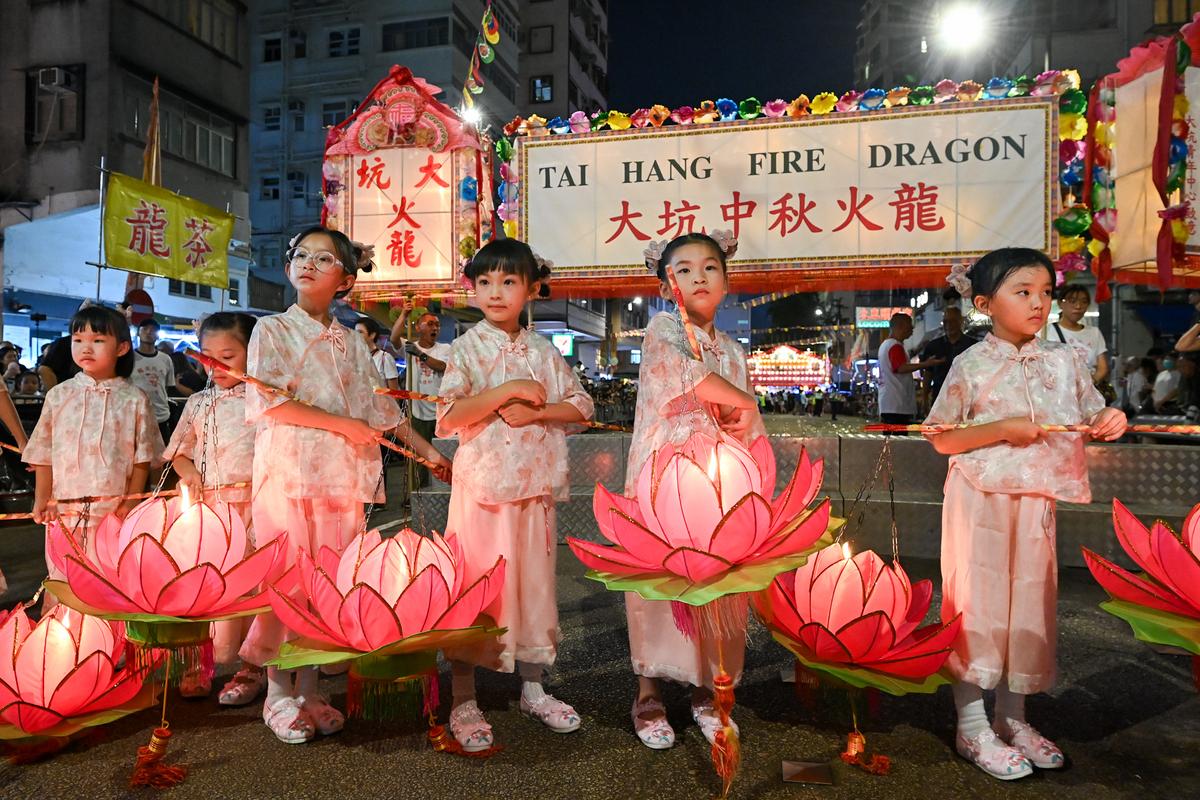
The Fire Dragon Dance: A Beacon of Resilience Through Crises
When visiting the late Chan Tak Fai at the Welfare Association of Tai Hang Residents, one was instantly struck by his meticulous collection of media coverage on the Fire Dragon Dance. Clothed in his signature red and yellow “Tai Hang Night Dragon” commander uniform, Chan would share cherished memories from his extensive involvement with the tradition, highlighting its potent symbolism.One vivid recollection dates back to the SARS outbreak in 2003. The epidemic left Hong Kong on edge, culminating in 299 deaths and widespread public fear. Despite the tense atmosphere, Chan remained steadfast in his belief that the Fire Dragon dance could counteract the epidemic. Although the government restricted the ritual to just one day, Chan orchestrated a citywide event on May 17, 2003. Fire Dragon dances were performed in nine districts of Hong Kong in a collective effort to combat the virus. For Chan, the memory remained indelible, reinforcing his faith in the Fire Dragon’s powers.
In 2020, the world grappled with a new health crisis—COVID-19. Despite stringent “group gathering restrictions,” Chan persevered in his quest to stage the Fire Dragon dance. Although he ultimately could not secure government approval, his commitment never waned. In his view, the Fire Dragon symbolizes a protective spirit and a cultural lifeline for the Tai Hang community.
Over the last three years, the grandeur of the Mid-Autumn Festival Fire Dragon dance may have been compromised due to pandemic constraints, but the core rituals have endured. Under Chan’s watchful eye, the Lotus Temple rites and the dragon’s head and tail parading continued unabated. Even during a torrential “black rainstorm” on the 2020 “moon greeting” night, Chan and the Tai Hang residents persevered, performing the Fire Dragon dance in pouring rain. The focus was not on entertaining the city or boosting tourism but on preserving the traditional essence of the Fire Dragon dance—warding off epidemics and honoring a divine miracle.
The tale of the Fire Dragon Dance under Chan’s stewardship is one of resilience and unyielding faith, qualities that not only define Chan but also encapsulate the enduring spirit of the Tai Hang community. Even in the face of modern crises, the Fire Dragon continues to burn bright, fueled by the collective hope and resolve of a community bound by tradition.

A Legacy Etched in Flame: Chan Tak Fai’s Final Mission and the Fire Dragon Cultural Museum
In an era where traditions can quickly fade into obscurity, the late Chan Tak Fai worked tirelessly to preserve and elevate the Tai Hang Fire Dragon dance. One of his most ambitious projects was establishing the Tai Hang Fire Dragon Heritage Centre, which aimed to serve as a living archive of this precious cultural heritage.After successfully acquiring a Grade III historic building at 12 Library Street, Tai Hang, in June 2015, Chan was thrilled when the structure was included in the government’s “Phase Four Revitalizing Historic Buildings Scheme.” Fueled by enthusiasm, he closely monitored the project’s progress, seeing it as a pivotal step in preserving the Fire Dragon dance for future generations. The Tai Hang Fire Dragon annual Photography Competition documenting the event and its outcome was especially important to Chan.
Originally slated to open in 2019, the museum’s inauguration was postponed due to the COVID-19 pandemic. Finally, on June 11, 2022, the Tai Hang Fire Dragon Heritage Centre opened its doors with Chan gracing the inaugural ceremony. The first-floor exhibition hall, a focal point of the museum, showcases the Tai Hang Fire Dragon’s rich history and the evolution of Tai Hang Hakka Village through oral history, photographs, and videos. The museum realized one of his longest-held dreams for Chan, providing a platform for people to explore Tai Hang’s unique cultural tapestry.
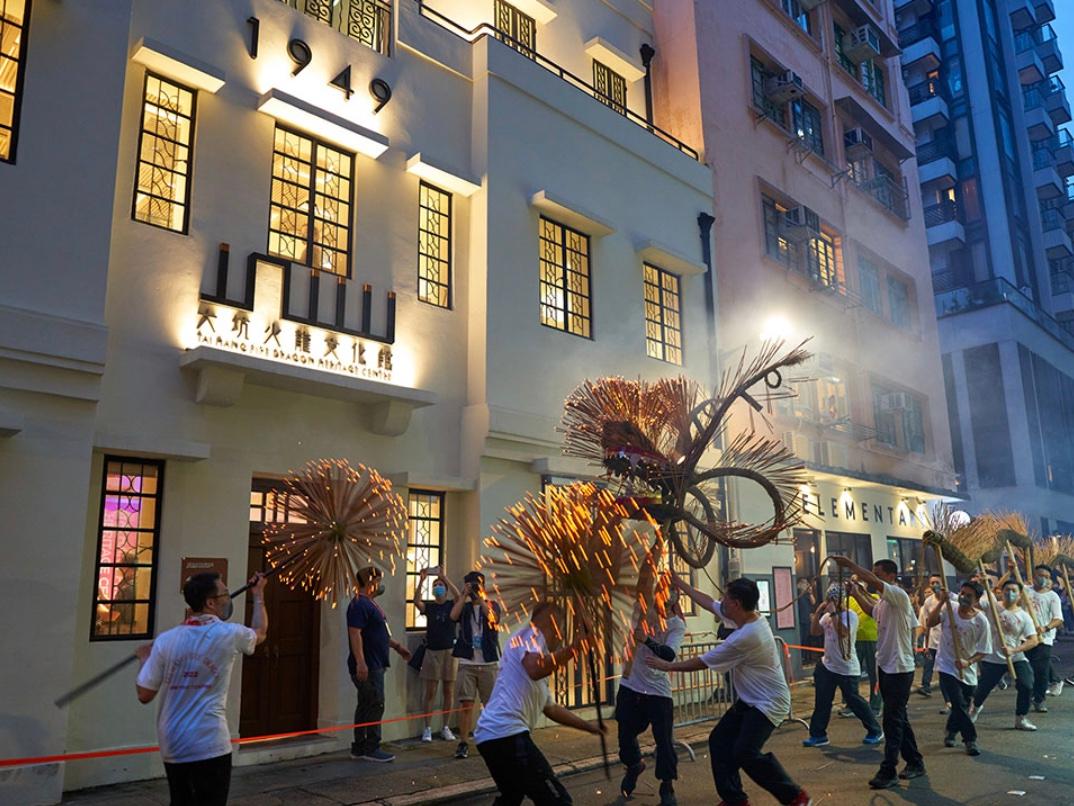
A Final Performance and Unfinished Symphony
After three consecutive years without a traditional Tai Hang Fire Dragon dance due to pandemic restrictions, the ritual saw a momentous return on Nov. 20, 2022. Hosted by the Antiquities and Monuments Office, the event featured 76-year-old Chan leading a group of young dancers. This would become his final public appearance, capping a lifetime dedicated to preserving and promoting the Fire Dragon dance. Online commentators heralded it as a poignant ceremony signaling the end of the pandemic era.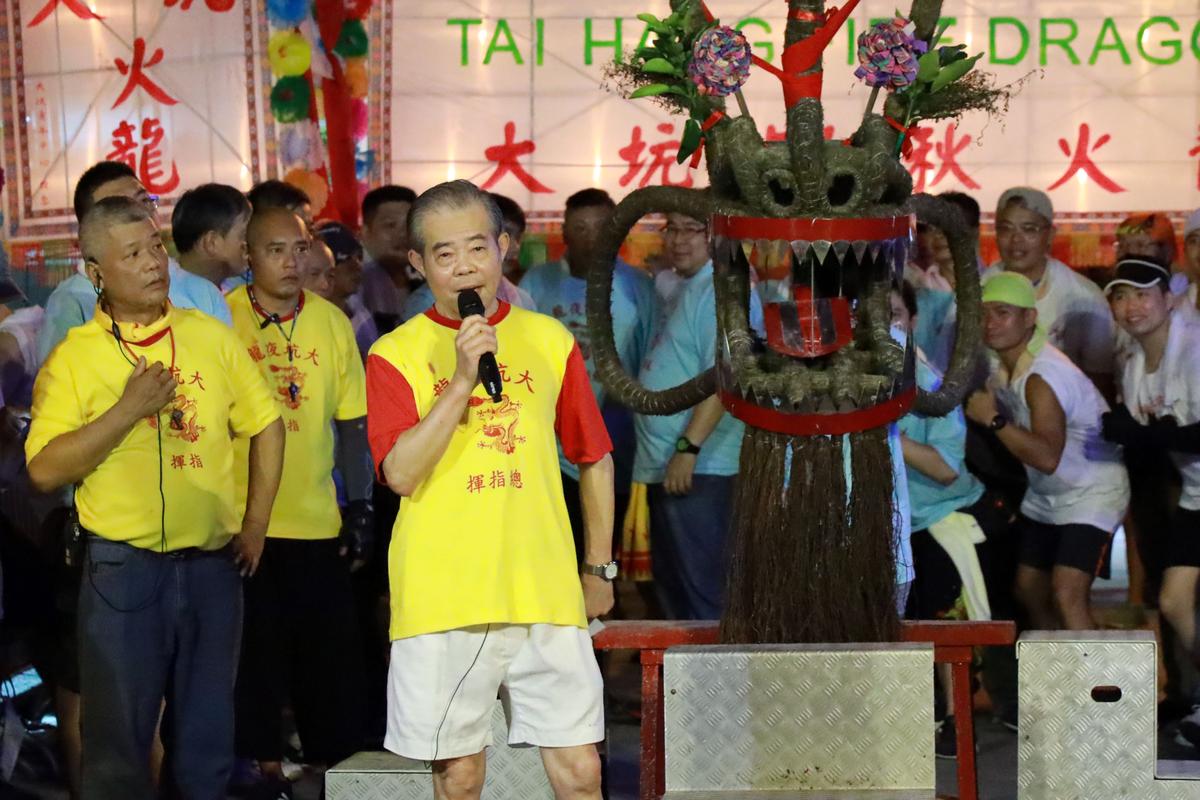
Just two weeks later, on Dec. 4, 2022, Chan passed away from a sudden heart attack while working alone at the Tai Hang Residents’ Welfare Association, aged 76. Cheung Kwok Ho, the association’s deputy director, has succeeded as the Tai Hang Fire Dragon commander.
Chan’s influence on the Fire Dragon dance was profound, stretching from his early involvement in his teens to his seventies. He saw his dream project, the Tai Hang Fire Dragon Heritage Centre, come to fruition and gave a final, electrifying performance. Though he may have completed his last mission, his indelible impact on the Fire Dragon dance and Tai Hang community ensures that his legacy will continue to burn brightly for generations to come.
